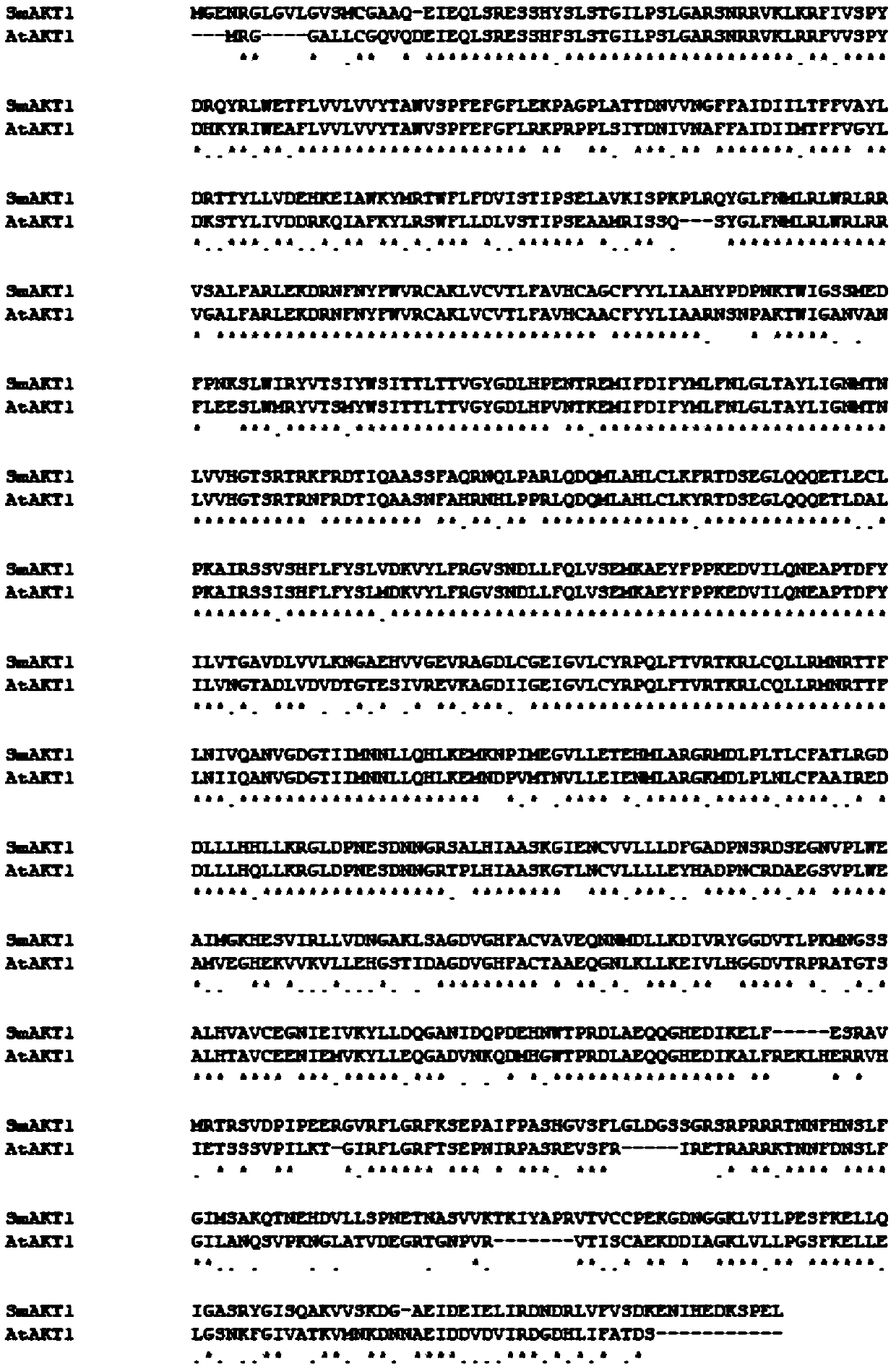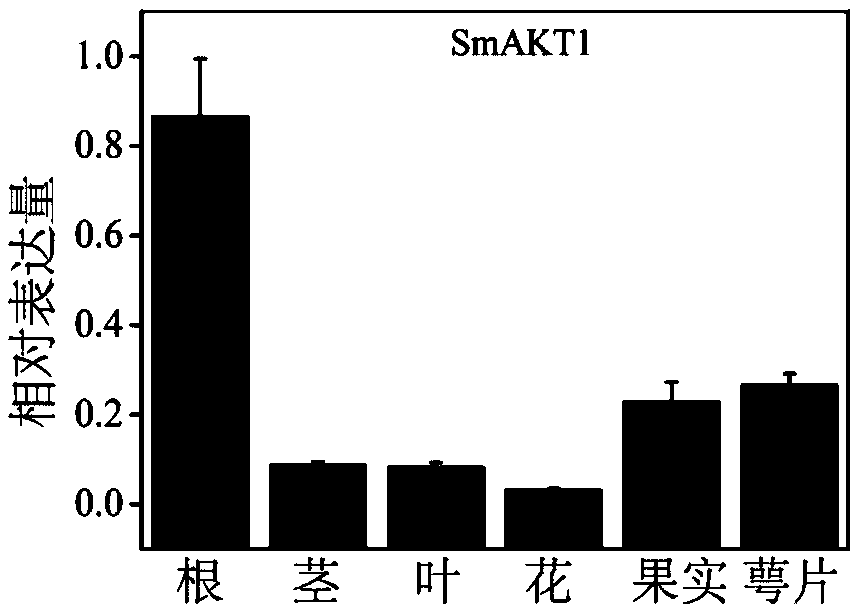Eggplant potassium ion channel protein SmAKT1 as well as encoding gene and application thereof
A protein and coding technology, applied in the biological field, can solve problems such as research lag, and achieve the effect of enhancing tolerance and great application value
- Summary
- Abstract
- Description
- Claims
- Application Information
AI Technical Summary
Problems solved by technology
Method used
Image
Examples
Embodiment 1
[0042] Embodiment 1, the cloning of eggplant SmAKT1 gene
[0043] 1. Acquisition of plant material
[0044] The plant material used in this experiment was eggplant. Eggplants are planted at the Aerospace Breeding Base in Minhang District, Shanghai.
[0045] 2. Extraction of RNA
[0046] All the centrifuge tubes and tips of Ribonuclease (RNase) used in this experiment were purchased from Sangon Bioengineering (Shanghai) Co., Ltd. Mortars and pestles used were autoclaved. Total RNA was extracted using TaKaRa MiniBEST Universal RNA Extraction Kit (purchased from Baoriji Biotechnology (Beijing) Co., Ltd.). RNA quality was detected by agarose gel electrophoresis and NanoDrop2000 spectrophotometer.
[0047] 3. RNA reverse transcription into cDNA
[0048] Reverse Transcription Kit using PrimeScript TM II 1st Strand cDNA Synthesis Kit kit (purchased from Baori Medical Biotechnology (Beijing) Co., Ltd.).
[0049] 4. Cloning of target gene
[0050] Use primers
[0051] F1 (SEQ I...
Embodiment 2
[0054] Example 2, Sequence Information and Homology Analysis of Eggplant SmAKT1 Gene
[0055] The full-length CDS open reading frame sequence of the novel eggplant SmAKT1 gene of the present invention is 2655bp, and the detailed sequence is shown in SEQ ID NO.1. According to the CDS open reading frame sequence, the amino acid sequence of eggplant SmAKT1 is deduced, with a total of 884 amino acid residues. See the sequence shown in SEQ ID NO.2 for the detailed sequence.
[0056] The CDS open reading frame sequence of eggplant SmAKT1 and the amino acid sequence of its encoded protein were searched for nucleotide and protein homology in the Arabidopsis Genome Database using the BLAST program, and it was found that it was similar to the Arabidopsis AtAKT1 gene (AT2G26650.1 ) have 67.15% identity at the nucleotide level; at the amino acid level, they have 70.03% identity between them, such as figure 1 shown.
Embodiment 3
[0057] Example 3. Expression difference of SmAKT1 gene in different tissues of eggplant and its expression pattern under low potassium and salt stress
[0058] 1. Acquisition of plant material
[0059] Roots, stems, leaves, flowers, fruits, and sepals were taken from eggplant plants of 4-month seedling age. The samples were wrapped with aluminum platinum paper and put into liquid nitrogen immediately, and then transferred to -80°C ultra-low temperature freezer for storage until use. Three plants were taken from each sample, and the experiment was repeated three times.
[0060] Eggplant seedlings sown at the same time in the artificial climate culture room and with the same growth were selected, and when they grew to four leaves and one heart, they were treated with low potassium and salt stress respectively, and the leaves of the treated materials were taken at 0h, 6h, 12h, 24h, 48h and 7 days and root system. Three samples were taken at each time point, and each set of exp...
PUM
 Login to View More
Login to View More Abstract
Description
Claims
Application Information
 Login to View More
Login to View More - R&D
- Intellectual Property
- Life Sciences
- Materials
- Tech Scout
- Unparalleled Data Quality
- Higher Quality Content
- 60% Fewer Hallucinations
Browse by: Latest US Patents, China's latest patents, Technical Efficacy Thesaurus, Application Domain, Technology Topic, Popular Technical Reports.
© 2025 PatSnap. All rights reserved.Legal|Privacy policy|Modern Slavery Act Transparency Statement|Sitemap|About US| Contact US: help@patsnap.com



